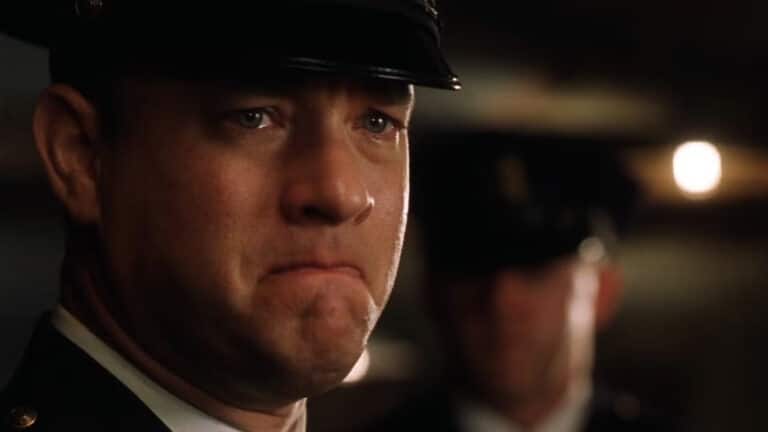13 ‘Normal’ Things From the ’40s and ’50s Considered Luxuries Today

Times have changed considerably since the 1940s and ’50s in countless ways. More than usual inflation has occurred, making many things once considered normal and accessible to most a luxury today.
From the expense of certain items and outings to a decrease in quality, older generations have a right to point out the drastic changes over time.
So, before one says the glib phrase, “Okay, boomer,” stop and think. What was once an everyday joy that now feels out of reach for a lot of individuals?
1. Buying a Home

Folks living in the 1940s and ’50s enjoyed a housing market much different from today. According to Foxbusiness.com, in 1940, the average house cost $2,938. If adjusted for inflation, that equates to $64,372.84 in 2024. Although some parts of the U.S. have homes at this price, most cost far more — an average of $420,800, to be precise.
With increased prices, many Americans will never own a home, compared to the ’40s and ’50s.
The once-attainable “American Dream” did not feel impossible for families in that era, especially thanks to affordable pricing and things like the GI Bill home loan benefit, which helped veterans purchase a home.
Today, home ownership has become much rarer for the average citizen.
2. Grocery Delivery

Watch any film from the 1940s or sitcom from the 1950s, and you’ll see a widespread occurrence: grocery deliveries. Many people had their food delivered whether they lived in the city or suburbs, especially the former.
Convenient and without added fees, this era also saw the delivery of milk, bread, fruit, ice, and pharmaceuticals.
While people still have these various things delivered (especially in a post-pandemic world), high delivery fees deter many from doing so. That money will add up quickly.
3. Going to the Movies

Quentin Tarantino said in the 2016 Hollywood Reporter’s Directors Roundtable that cinema should be a “working man’s art form.” Indeed, a once accessible to all outing now feels like an extreme luxury. Ticket prices for movie theaters stayed low for years, with the average 1950 ticket price being a mere 46 cents.
In 2024, that cost has grown exponentially to an average of $10.78, with many places in the U.S. seeing prices at upwards of $20. Add concessions, and a family of four will spend over $100 to see a movie.
Looking back on the prices of the 1940s and ’50s, it seems like a far-off dream. With the rise of streaming, movies watched outside the home have become a rarity for many.
4. Nightclubs With Orchestras

Going to a nightclub with a live orchestra felt like a fancy night out in the ’40s and ’50s, but it happened much more often for the average citizen. Today, places with live music alone rarely feel fancy. If you’re lucky, you’ll find a small jazz club serving supper, coffee, and drinks. Good luck finding a restaurant or nightclub with a live orchestra.
These days, the only way to enjoy an evening akin to a 1950s nightclub would be a small supper club or a large concert venue like The Hollywood Bowl. Still, these only mildly resemble past joys, making those from the older generations yearn for a bygone tradition.
5. Dollhouses

Something as simple as a dollhouse may not seem like a luxury, but it can be costly today. Large, intricate wooden dollhouses and Barbie houses can cost hundreds of dollars. Beautiful as they may be, many families cannot afford to buy them for their children.
In the 1940s and ’50s, parents could buy dollhouses for much less. From simple to more extravagant ones, a dollhouse could cost as little as $3.19, according to AJC.com. If adjusted for inflation, that should only be around $52 in 2024, proving how luxurious these toys have become.
6. Good Mattresses

A quality, comfortable mattress should not be a luxury. What one sleeps on should be one of the most attainable items in the household, no matter the income. While the quality will vary, seeing how much a mattress costs in 2024 compared to the past will astonish many.
According to AJC.com, a Sealy mattress cost $38 in 1945. While that sounds a little pricy back then, it still was more attainable than in today’s age. In 2024, Sealy mattresses can cost anything from $200 to $2,000. A good night’s rest certainly costs a lot more today.
7. Quality Wood Furniture

When it comes to quality and price, wood furniture from the 1940s and ’50s does not compare to today’s pieces. Various reasons account for the differences, but the most obvious is the increase in mass production.
While it’s appealing to find good values when shopping for a home, buyers will get what they pay for. Companies today use cheaper materials to produce greater quantities than in the past. As a result, prices remain low, but so does quality.
In the ’40s and ’50s, manufacturers valued craftsmanship and would produce heavy-duty pieces for the home. It’s not impossible to find furniture of this quality in the modern world, but it will cost you a pretty penny.
8. Family Vacations

Families in the 1940s and ’50s would take vacations frequently, traveling worldwide. Traveling in the United States became increasingly popular for the average family and a very attainable goal. Anywhere from the Grand Canyon to Disneyland to the Jersey Shore became popular tourist destinations in the ’50s.
In 2024, the price of a nice vacation has skyrocketed. Compared to years past, only affluent families can travel frequently, while others must save for a long time or not go at all. Today, a family of four could pay over $700 for Disneyland tickets for a single day compared to $4 ($1 a piece) in 1955.
9. After Work Drinks

After-work drinks among co-workers still occur in 2024, but they happen much less often. Alcohol consumption has not decreased on average, but the way people consume it has. Many will simply drink at home because it’s cheaper than what bars charge.
Instead of going out for drinks after work every day or three to four days a week, most will choose to go out only one day. Friday will be the most likely choice. Having a few drinks with co-workers shouldn’t be a luxury, but in 2024, everything costs much more than it once did.
10. Renting an Apartment

If buying a home has become such a luxury in 2024, one would think renting an apartment would be more attainable. Although it can be more accessible, rent has also increased so much that the percentage renters must spend from their income has increased.
Consider the difference between renting a New York City apartment in 1950 and today. According to CurbedNY, renters paid an average of $60 in 1950 for an apartment, depending on the neighborhood.
An apartment should be roughly $782 at standard inflation rates in 2024. No wonder even an apartment feels like a luxury when the average New York apartment rents for $3,784 for a mere average of 600 square foot space, according to Apartments.com.
11. A Nice Wedding

Couples have always wanted a lovely wedding for their special day. Large weddings occurred in the 1940s and ’50s, but smaller weddings were the norm. However, having a lovely wedding did not feel unattainable, no matter the size of the event.
Flash forward 80 years, and the wedding industry has become a much more lucrative business. Consequently, anything from dresses to flowers and photographers costs a great deal. This leads many couples to smaller, simpler weddings simply because it’s what they can afford.
12. Single Income Families

In the 1940s and ’50s, families lived on a single income for myriad reasons, but with one crucial factor: families only required one income to live decently. While dual-income families did exist, it was much more rare compared to today.
With the rise of rents, mortgages, food, car payments, and other necessities, many people need two incomes to survive, let alone live comfortably. Those who only need one income do indeed feel luxurious.
13. Sporting Events

Like many other things, attending a sporting event like a baseball or football game has increased far beyond an individual’s means. For example, in the ’50s, people would go to baseball games on a whim, spending less than two dollars.
In 2024, according to SeatGeek, the average baseball ticket costs $53, with some teams exceeding $100. Playoff games or championships like the World Series or the Superbowl will never be for the average person again.
Games like these will be reserved only for those who can shell out hundreds, sometimes thousands of dollars for a single event.





